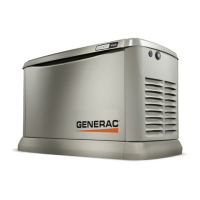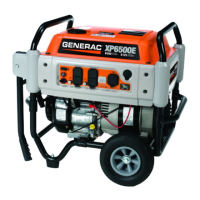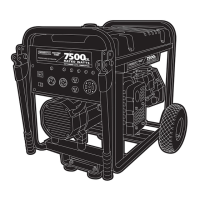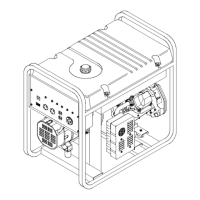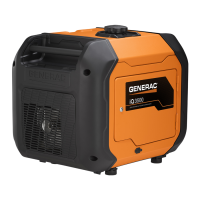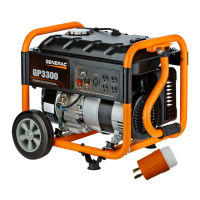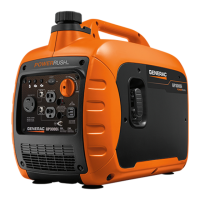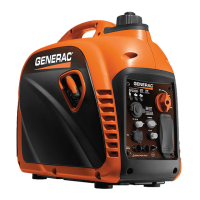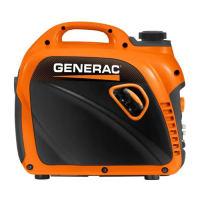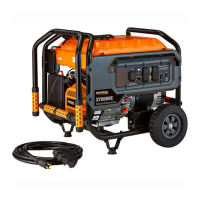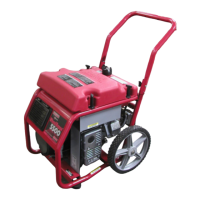Electrical Connections
Installation Guidelines For 60 Hz EcoGen™ Generators 25
Section 6: Electrical Connections
Generator Connections
See Figure 6-1. The electrical wiring enclosure is located
behind an access panel on the intake end of the unit.
Remove the intake side panel as directed in Intake Side
Panel Removal, and then remove the access panel.
Connect wires according to the diagram and tables.
1. Remove the main AC / control wiring knock-out
plugs from the back of the generator.
2. Using the appropriate wiring hole, install the
conduit and main AC and control wires between
the generator and the connected loads.
3. Close the unused hole with a NEMA 3R rated plug
(field-supplied).
NOTE: All conductors are to be rated for minimum 300V.
Control system interconnections may consist of N1, N2,
and T1, and leads 23 and 194. The generator control
wiring is a Class 1 signaling circuit. Reference the
instruction manual of the specific engine generator for
wiring connection details. Recommended wire gauge
sizes for this wiring depends on the length of the wire, as
recommended in Table 6-3.
Exception: Conductors of AC and DC circuits, rated
1000 volts nominal or less, shall be permitted to occupy
the same equipment, cable, or conduit. All conductors
shall have an insulation rating equal to at least the
maximum circuit voltage applied to any conductor within
the equipment, cable, or conduit. See NEC 300.3(C)(1).
4. Strip the insulation from the ends of the wires. Do
not remove excessive insulation. See Figure 6-1.
Route the sense wires through the supplied wire tie
(C1), and connect to the sense wire terminal block
(B). Push down on the spring loaded connection
point with a flat head screwdriver, insert wire, and
release.
5. Using the same process, route the control wires
through the second supplied wire tie (C2), and
connect to the control wire terminal block (A).
6. When all the wires are securely connected to the
proper terminals, tighten the wire ties and clip the
excess length.
NOTE: Only bare wire should be inserted into each
terminal. Do not insert any wire insulation into terminals.
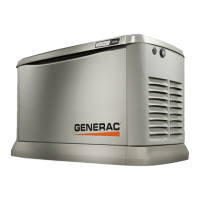
